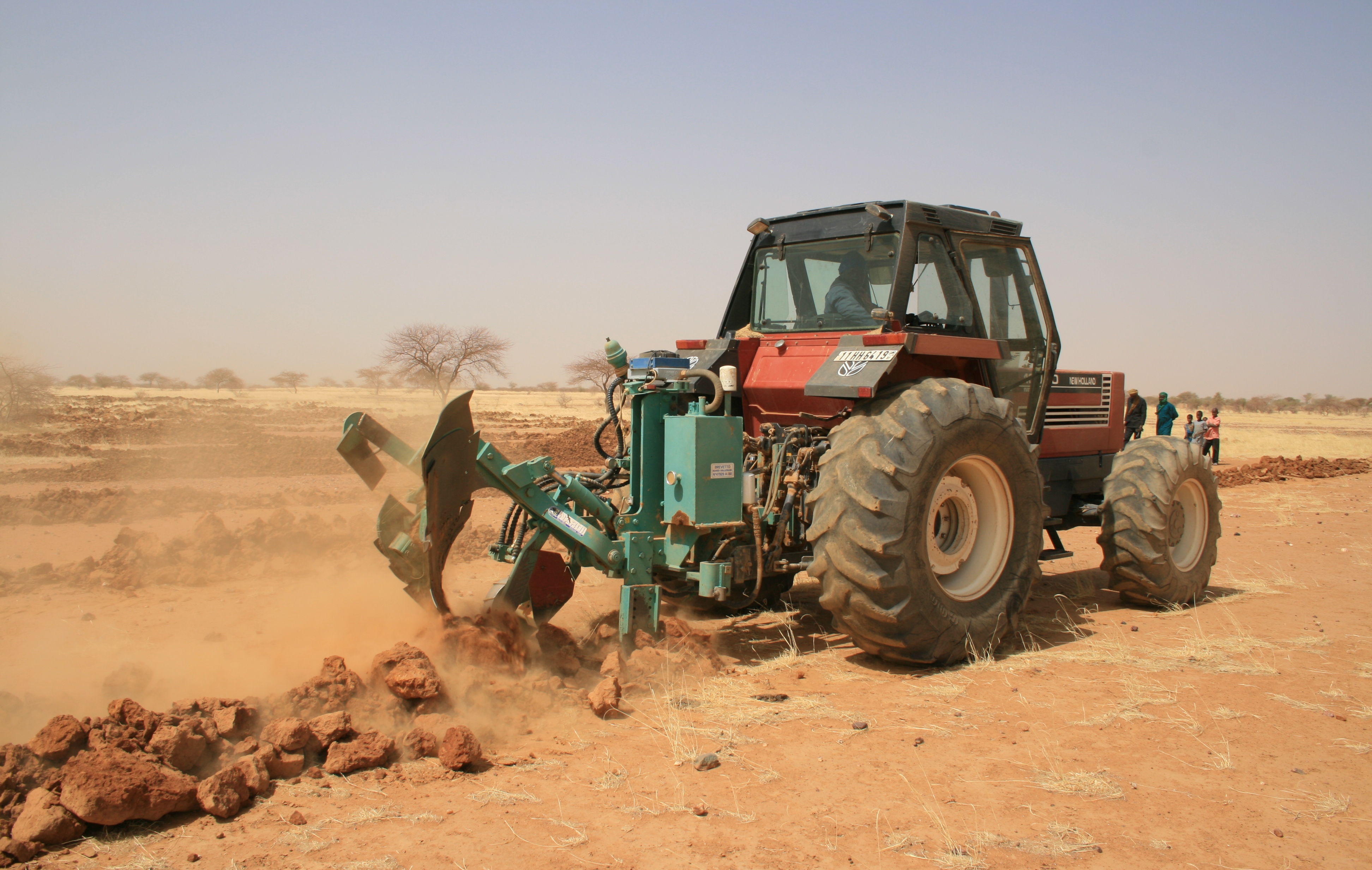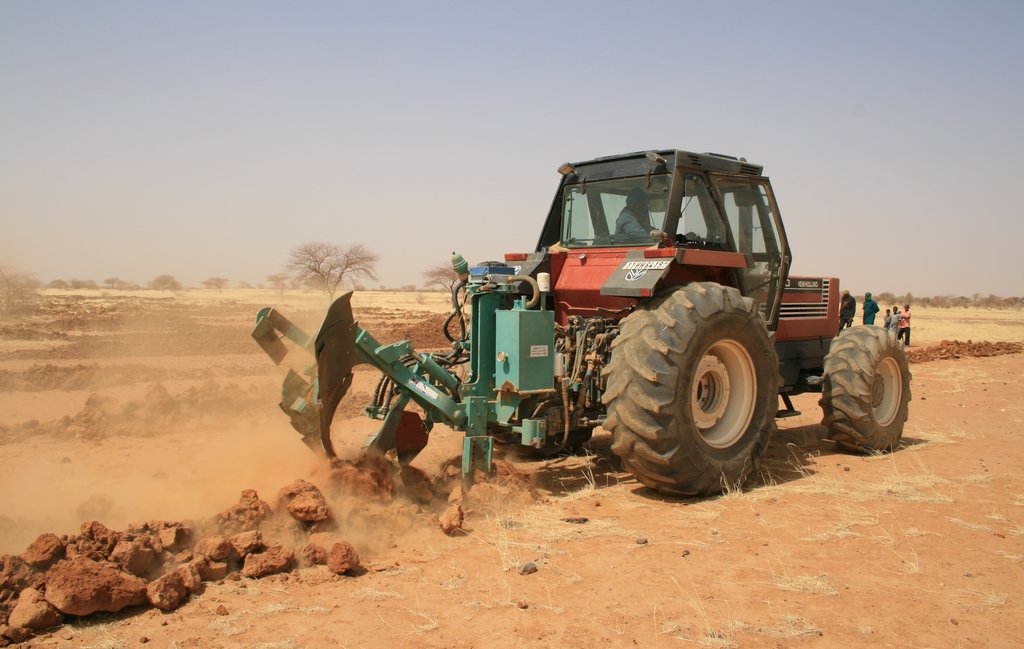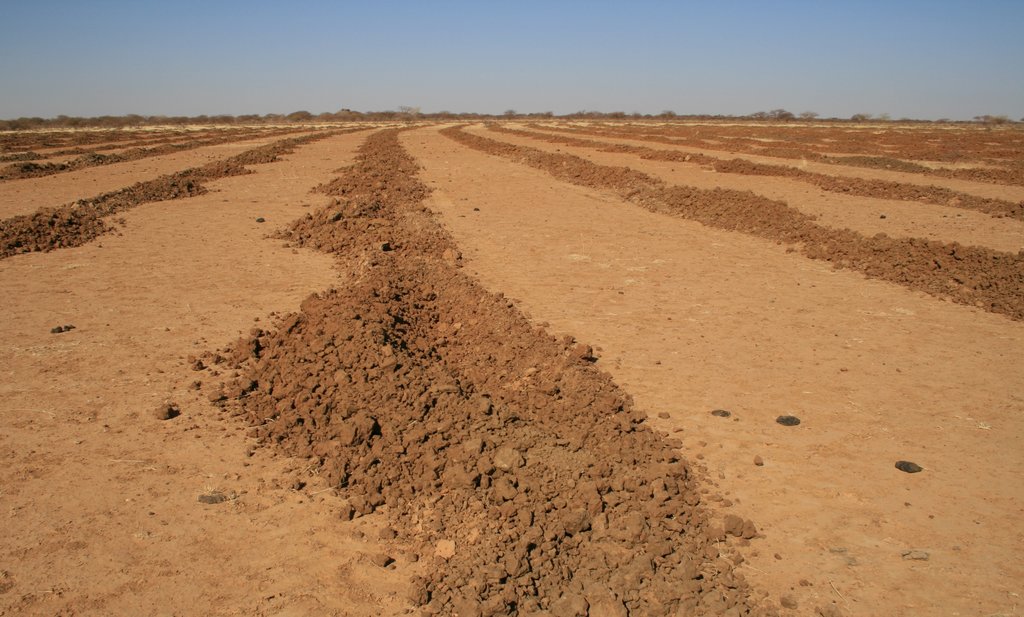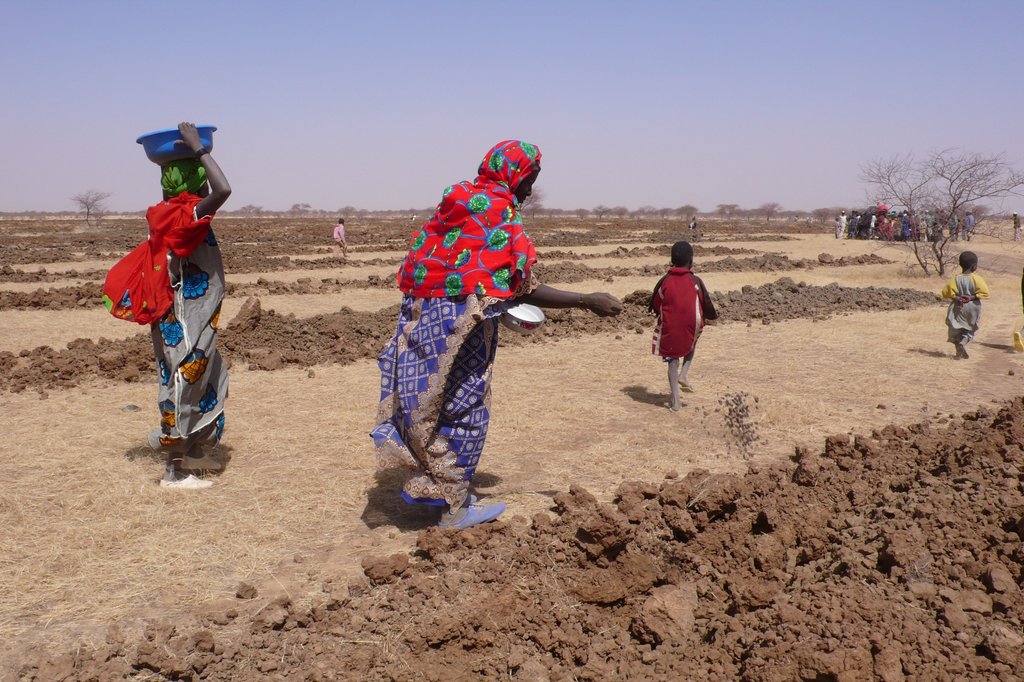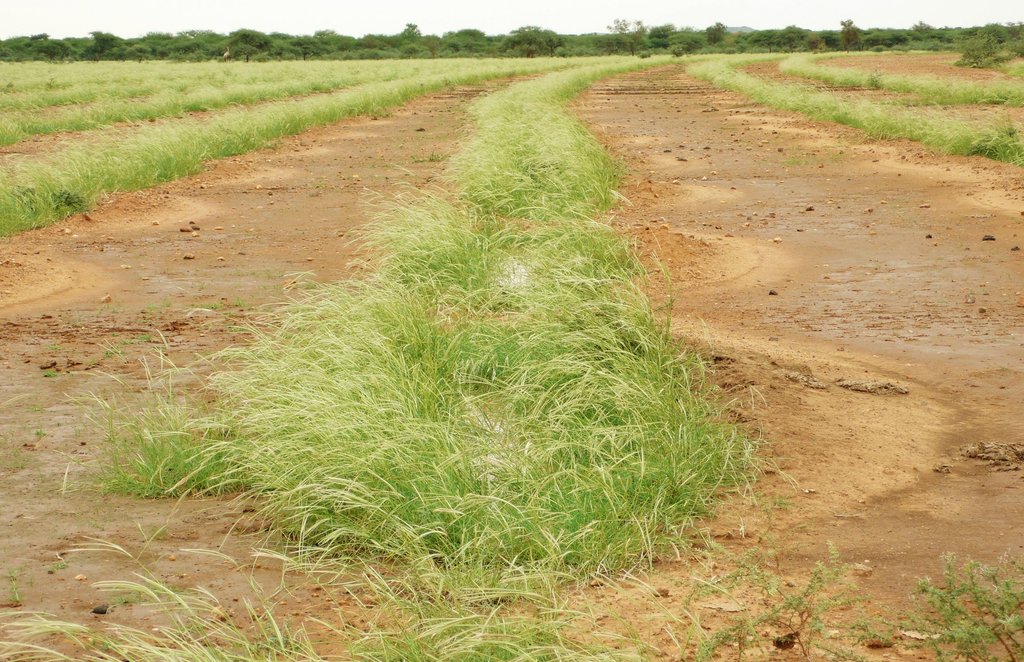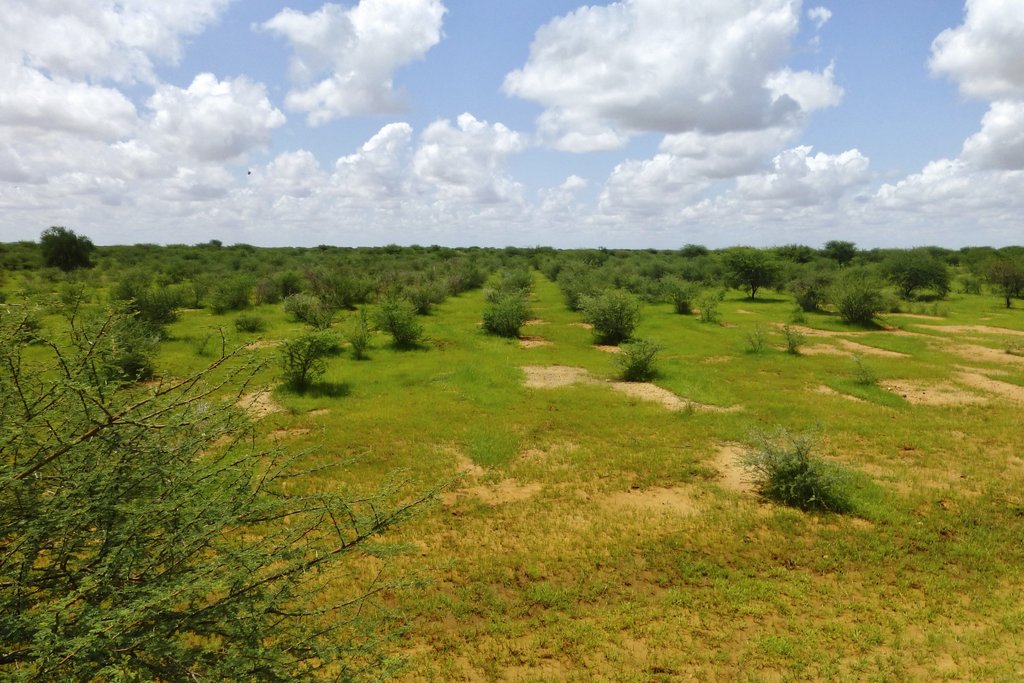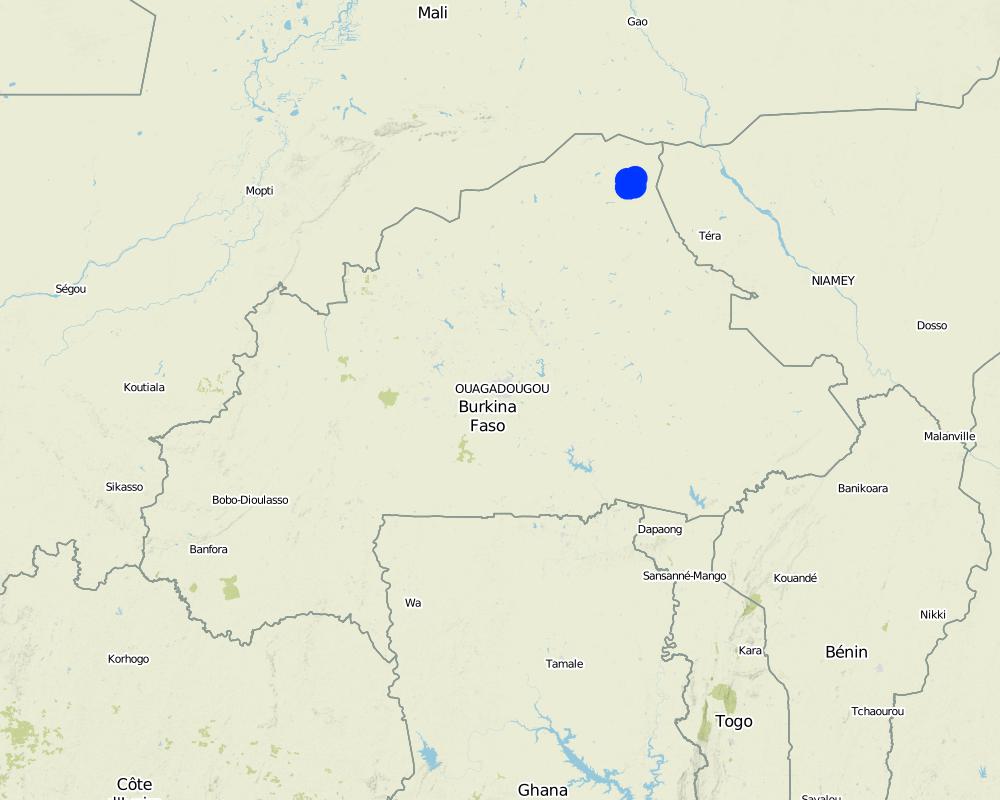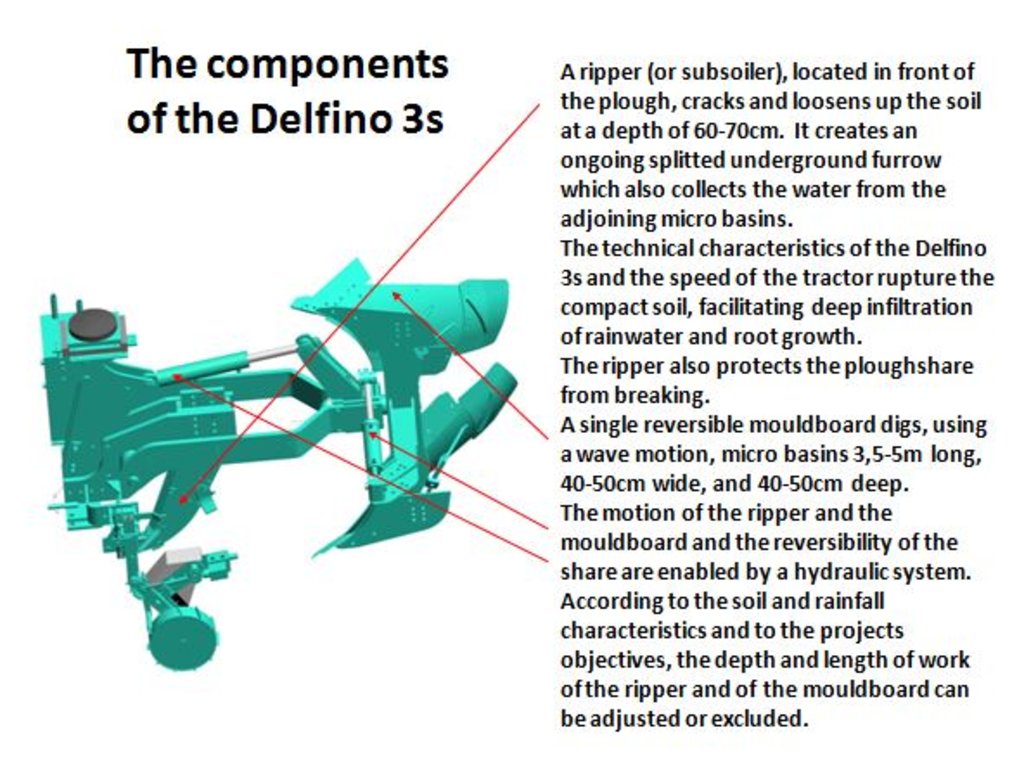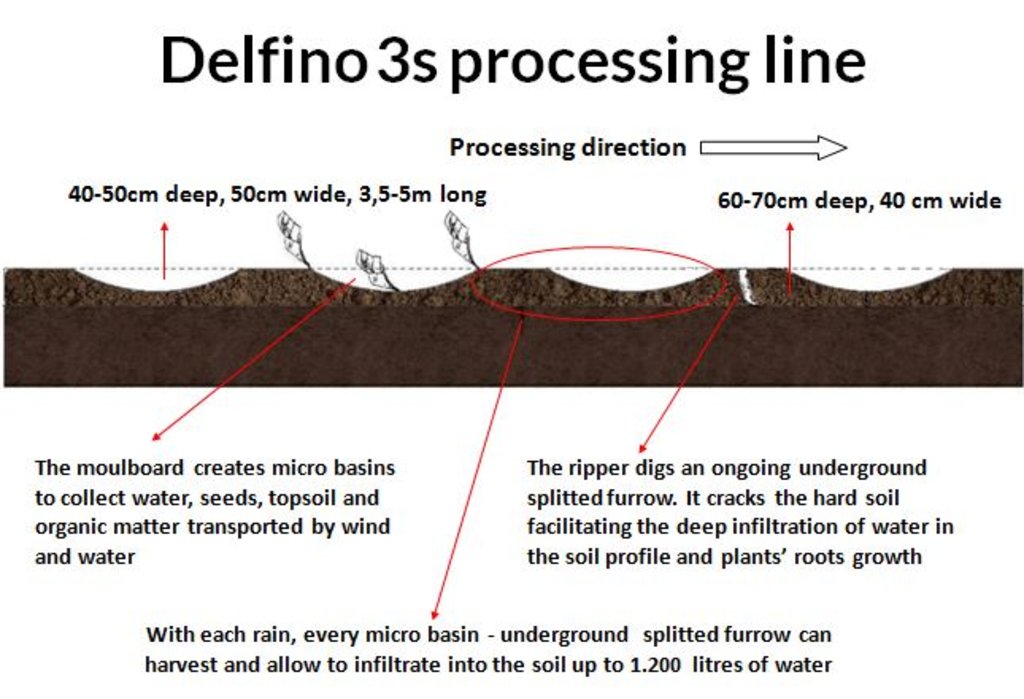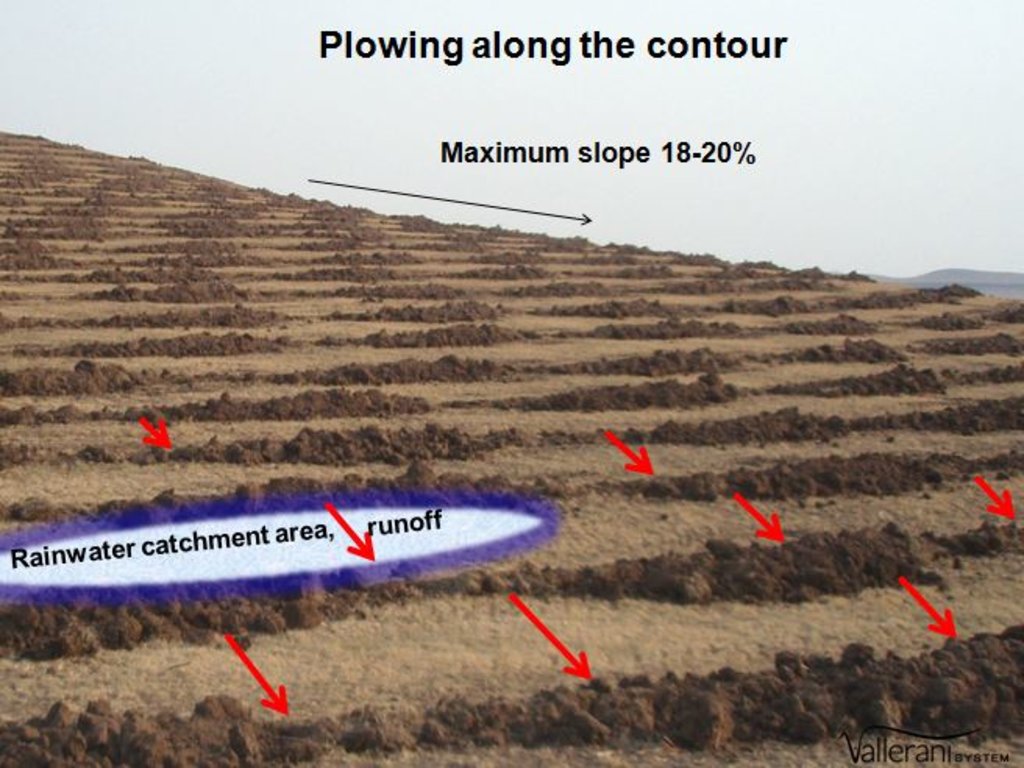Vallerani System [Буркина Фасо]
- Создание:
- Обновить:
- Составитель: Sabina Galli Vallerani
- Редактор: –
- Рецензенты: Donia Mühlematter, Rima Mekdaschi Studer, Brigitte Zimmermann
technologies_1528 - Буркина Фасо
- Полная аннотация в формате PDF
- Полная аннотация в формате PDF для вывода на печать
- Полная аннотация в формате интернет-страницы
- Полная аннотация (неотформатированно)
- Vallerani System: 8 марта 2019 г. (public)
- Vallerani System: 16 июля 2018 г. (inactive)
- Vallerani System: 16 июля 2018 г. (inactive)
- Vallerani System: 12 июля 2018 г. (inactive)
- Vallerani System: 15 августа 2018 г. (inactive)
- Vallerani system: 4 апреля 2018 г. (inactive)
- Vallerani system: 4 января 2017 г. (inactive)
Просмотреть разделы
Развернуть все Свернуть все1. Общая информация
1.2 Контактные данные специалистов и организаций, участвующих в описании и оценке Технологии
землепользователь:
Long Allain
Reach Afrique, NGO
Буркина Фасо
Специалист по УЗП:
Lindo Grandi
Deserto Verde Burkinabé, NGO
Швейцария
землепользователь:
Boureima Amadou
Reach Afrique
Буркина Фасо
Название проекта, содействовавшего документированию/оценке Технологии (если применимо)
Book project: Water Harvesting – Guidelines to Good Practice (Water Harvesting)Название организации (-ий), содействовавших документированию/оценке Технологии (если применимо)
Reach Africa (Reach Africa)Название организации (-ий), содействовавших документированию/оценке Технологии (если применимо)
Reach Italia (Reach Italia) - Италия1.3 Условия, регламентирующие использование данных, собранных ВОКАТ
Когда были собраны данные (на местах)?
2012/2018
Составитель и ответственный(-ые) специалист(-ы) согласны с условиями, регламентирующими использование собранных ВОКАТ данных:
Да
1.4 Декларация по устойчивости описываемой Технологии
Вызывает ли описанная здесь Технология проблемы деградации земель настолько, что ее нельзя назвать природосберегающей?
Нет
2. Описание Технологии УЗП
2.1 Краткое описание Технологии
Определение Технологии:
A special tractor-pulled plow that constructs micro-catchments. It combines the traditional techniques of rainwater harvesting with mechanization for large scale land rehabilitation.
2.2 Подробное описание Технологии
Описание:
The Technology mechanizes the traditional technique of zai and semi circular bunds for water harvesting using a modified plow named Delfino3s pulled by a 180hp tractor. A normal plow on flat land excavates a symmetrical, continuous furrow, and earth piles up equally on both sides of the furrow. The Delfino3s plow has a single reversible plowshare that creates an angled furrow and piles up the excavated soil in half moon shaped ridges only on the downhill side. The plowing must be done along the contour to collect and slows down runoff water as it flows downhill. The plow’s blade moves in and out of the soil creating micro basins about 5 meters long, 50 cm deep, 50 cm wide and spaced 2-3 m. The ripper placed before the plow cracks up the soil to a depth of 70 cm facilitating the infiltration of water into the soil profile and the growth of deep roots. After plowing, the local population sows seeds of plants of indigenous species. They are sown along the ridges of the basins and in the furrow of the ripper. While for most species seeds are collected by the local population, for species rarely present in the region, seeds are purchased from tree nurseries. Sowing the manure of goat containing seeds has also been very successful with about 95% of all micro basin having at least one tree growing. The intervention on a big scale, the effects of water infiltration in depth, erosion reduction and vegetation growth, boost a long lasting rehabilitation process. Each day the Delfino plow can plow up to 20 ha, digging 6.000-7.000 micro basins. The speed, the capability to plow hard, abbandoned land, the effectiveness of the Delfino3s plow are its major advantages for the ecosystem rehabilitation process but require a big commitment. To make the best out of it, a great motivation and organizational work is necessary to: find great availability of land; train accuratelly the technicians; have well-rooted Subjects in the region. The technological aspect is just part of the recovery process, an important work with the Communities is required upstream and downstream. Communities are involved in the management process – in identifying the areas to be restored, clarifying the land uses of the affected areas, planning and implementing e.g. gathering and keeping seeds of local ecotypes, sowing, in the management of plantations and in the monitoring and evaluation of the results. Rules for SLM are adopted and respected by all. The Technology is applied in a degraded agro-sylvo-pastoral area of the Sahel Region, in the north east of Burkina Faso with 200-500 mm of annual rainfall. The soil is sandy-loam, strongly degraded with surface crust. The population is mainly composed of semi-nomadic herders. At the beginning of the project, the NGO Reach Italia was promoting schooling; they soon realized that during the dry season most kids left school and that to avoid it they should face food security and pasture improvement. So they started applying the Vallerani System and developped the participatory approach. The vegetation growth reduces the need for fodder search and long-range transhumance which also allows children to go to school regularly.The ecosystem rehabilitation effect of the technology help the communities to become more concious and resilient to the effects of climate change and prepared to cope with the socio-economic-environmental changes they are faced with.
2.3 Фотографии, иллюстрирующие Технологию
2.4 Видеоматериалы, иллюстрирующие Технологию
Комментарий, краткое описание:
A short video that introduces the Vallerani System.The video has been shot in the project area.
Дата:
14/05/2014
Место:
Oudalan, Burkina Faso
Автор съемки:
Jonathan van Laamsverde
Комментарий, краткое описание:
ICARDA Vallerani –Technology transfer from Morocco to Jordan.
The presentation of the ICARDA Minared project applying the Vallerani System for rangeland rehabilitation in the Jordan Badia.
Дата:
16/06/2016
Место:
Badia, Jordan
Комментарий, краткое описание:
REACH – DESERTO VERDE BURKINABe' Vallerani - Recupero Terre in Burkina Faso Sicurezza Alimentare.
Reach Italia and Deserto Verde Burkinabé present the project of soil rehabilitation and food security in Burkina Faso. Italian text.
Дата:
01/09/2009
Место:
Oudalan, Burkina Faso
2.5 Страна/ регион/ места, где применяется Технология, информация о которых собрана в данной Анкете
Страна:
Буркина Фасо
Административная единица (Район/Область):
Sahel Region
Пояснения:
Since the project is going on since 2002, it is possible to see implemented sites in different stadium of rehabilitation. The plowing lines are clearly visible.
Map
×2.6 Сколько лет применяется данная Технология
Если год начала применения Технологии достоверно неизвестен, дайте примерную оценку:
- 10-50 лет назад
2.7 Внедрение Технологии
Укажите, как именно Технология УЗП была внедрена:
- в качестве научного/ полевого эксперимента
- через проекты/ внешнее вмешательство
Пояснения (тип проекта и т.д.):
The Technology was introduced in the Region in an agro-sylvo-pastoral pilot project to fight against desertification by FAO in 1996-97.
3. Классификация Технологии УЗП
3.1 Основные цели и задачи реализации Технологии
- повышение производства
- снижение или предотвращение деградации земель, восстановление нарушенных земель
- сохранение/ повышение биоразнообразия
- снижение риска стихийных бедствий
- адаптация к изменению климата / экстремальным погодным явлениям и их последствиям
- смягчение последствий изменения климата
- создание благоприятных экономических условий
- создание благоприятных социальных условий
3.2 Текущий(-ие) тип(-ы) землепользования на территории, где применяется Технология

Пастбищные угодья
Пастбищные земли, экстенсивный выпас:
- Полукочевое/ отгонное животноводство
Интенсивный выпас/ выращивание кормов:
- Улучшенные пастбища
Основные породы скота и виды продукции:
Goats, cattle.

Непродуктивные земли
Поясните:
Hard abbandoned land
Замечания:
Especially at the beginning of the project, some communities agreed to try the system on their most unproductive land. After seeing the results, they started to request the intervention on less degraded soil and on fields that are closer to their villages.
Пояснения:
Major land use problems (compiler’s opinion): Land degradation-desertification with reduction of vegetation cover in terms of plant density and species diversity is the main problem: disappearance of grasses and trees, reduction of the size of the plants that are resistant and of the biological activity of the soil. Runoff, water and wind erosion increase. Drought and irregular precipitation have heavy consequences on soil fertility, availability of water for humans and livestock, and recharging groundwater.
3.3 Дополнительная информация о землепользовании
Обеспеченность водой участков, где реализуется Технология :
- богарные земли
Число урожаев за год:
- 1
3.4 Категория УЗП, к которой относится Технология
- агролесоводство
- Кочевое животноводство и пастбищное хозяйство
- сбор атмосферных осадков
3.5 Распределение Технологии по площади
Охарактеризуйте пространственное распространение Технологии :
- равномерно-однородное применение на определенной площади
Если Технология равномерно применяется на той или иной территории, укажите ее приблизительную общую площадь:
- 100-1000 км2
Пояснения:
Total area covered by the SLM Technology in the Region is about 25.600 hectares up to 2017.
3.6 Мероприятия УЗП, выполняемые в рамках Технологии

Агрономические мероприятия
- A1: Растительный/ почвенный покров
- A3: Поверхностная обработка почв
- A4: Глубокая обработка почв

Мероприятия с использованием растительности
- Р1: Древесный и кустарниковый покров
- Р2: Злаковые и многолетние травянистые растения

инженерные мероприятия
- И2: Насыпи, валы
- И4: Выровненные и спланированные канавы, ямы

управленческие мероприятия
- У1: Смена типа землепользования
- У2: Изменение формы/ интенсивности хозяйствования
- У3: Размещение с учетом природных и социально-экономических условий
3.7 Основные проблемы деградации земель, на решение которых направлена Технология

водная эрозия почв
- ВЭп: поверхностная эрозия/смыв верхних почвенных горизонтов
- ВЭл: овражная эрозия / оврагообразование
- ВЭд: косвенное воздействие водной эрозии

ветровая эрозия почв
- Эп: утрата плодородного слоя почвы
- Эд: косвенное влияние ветровой эрозии

ухудшение химических свойств почв
- Хп: Снижение плодородия и уменьшение содержания органического вещества (вызванное не эрозией, а другими причинами)

ухудшение физических свойств почв
- Фу: уплотнение
- Фк: растрескивание и коркообразование
- Фд: утрата био-продуктивных функций по другим причинам

биологическая деградация
- Бр: сокращение растительного покрова
- Бм: утрата местообитаний
- Бк: сокращение количества биомассы
- Бв: потеря природного разнообразия
- Бф: утрата биологической составляющей почв

деградация водных ресурсов
- Ва: почвенная засуха
- Вуг: изменения уровня грунтовых вод/ водоносных горизонтов
Пояснения:
Main causes of degradation: over-exploitation of vegetation for domestic use , such as wood cut for cooking, to feed livestock or as building material, overgrazing, low contribution of animal dejections that are used as cooking fuel, change of seasonal rainfall, droughts. Secondary causes of degradation: deforestation / removal of natural vegetation (incl. forest fires), low environmental awareness and support services such as forestal or veterinary assistance.
3.8 Предотвращение и снижение деградации земель, или восстановление нарушенных земель
Укажите цель Технологии по отношению к деградации земель :
- снижение деградации земель
- восстановление/ реабилитация нарушенных земель
4. Технические характеристики, мероприятия по практической реализации, вложения и стоимость
4.1 Технический рисунок, иллюстрирующий Технологию
4.2 Спецификация / пояснения к техническому рисунку
Drawing 1) A. The land chosen together with the local population is plowed with the special Delfino3s plow. The spacing between the plowed lines depend on: slope, soil and rain characteristics, purpose of the project. In average the inter-line is 4-6m wide. B. Local people sow seeds (collected from local trees or bought if species are rare) or goat dung containing seeds (collected in the night enclosures after feeding the goats shaking trees with ripe seeds). C. The micro basins collect the rain that falls into the crescents and up to 90% of the runoff water. The water easily penetrates into the soil profile, remains available to plant roots without risk of evaporation and eventually infiltrates to the groundwater. Drawing 2) All plowing measures are adjustable. Total length of work: 4/8 m. Tractor required: 180hp. Working speed: 4/7 Km/h which correspond to 1,5/2.5ha per hour. Weight of the plough: 1800 Kg. Drawing 3) To optimize run off harvesting and reduce water erosion, the ploughing must always be done along the contour. The bare soil between the tilled lines works as catchment area for the collection of runoff. To facilitate the execution of the plowing along the contour, nowadays there are new technologies such as laser guidance systems or GPS assistence.
4.3 Общая информация по необходимым вложениям и стоимости
Уточните, как рассчитывались затраты и вложения:
- на площадь, где применяется Технология
Укажите размер и единицу площади:
100 hectares
Укажите денежные единицы, использованные для подсчета затрат:
- Доллары США
Укажите среднюю дневную заработную плату наемных работников:
2.5
4.4 Мероприятия, необходимые для начала реализации
| Деятельность | Тип мероприятия | Сроки | |
|---|---|---|---|
| 1. | Project planning, consulting and training | Другие мероприятия | Before starting |
| 2. | Plowing with the Delfino plow | Инженерные | Dry season |
| 3. | Seed harvesting and storage | Агрономические | When seeds are ripe |
| 4. | Missing seeds purchase in local markets or nurseries | Агрономические | When seeds are ripe |
| 5. | Direct sowing | Агрономические | Dry season |
4.5 Вложения и затраты, необходимые для начала реализации
Если землепользователем оплачено менее 100% затрат, укажите, кем покрывались остальные затраты:
The NGO REACH AFRICA which implements the project is also supported by REACH ITALIA which mainly works for foundraising. They have many different founders. After the first years, thanks to the collaboration and founding by the Swiss Association Deserto Verde Burkinabé and the good results achieved, founders are more likelly to be found. The main are: different NGO's, some Italian Municipalities, a Swiss school, the Gouvernement of Burkina Faso, FAO, international cooperation agencies of Luxembourg and Belgium, a mining company and others.
Пояснения:
The actual (2018) total cost of each implemented hectare is $ 170. This cost can be considerably reduced by around 22% in the case of an optimal use of the Technical Mechanization Unit, ie 800-1000 hours of work per year. This means that an operator who works with the plow Delfino has a gross investment cost which can vary according to its technical and organizational experience and by the amount of the plowed surface each year.
4.6 Поддержание/ текущее обслуживание
| Деятельность | Тип мероприятия | Сроки/ повторяемость проведения | |
|---|---|---|---|
| 1. | Pasture management to avoid overgrazing | Мероприятия с использованием растительности | After the rain and in the dry season |
| 2. | Vegetation growth management | Мероприятия с использованием растительности | During the first 3-5 years |
| 3. | Woodcut management | Мероприятия с использованием растительности | After 4-7 years |
| 4. | Equipment maintenance (plow, tactor) | Управленческие | Daily, weekly, seasonal |
4.7 Стоимость поддержания/ текущего обслуживания ( в год)
Если землепользователем оплачено менее 100% затрат, укажите, кем покрывались остальные затраты:
The NGO REACH AFRICA which implements the project is also supported by REACH ITALIA which mainly works for foundraising. They have many different founders. After the first years, thanks to the collaboration and founding by the Swiss Association Deserto Verde Burkinabé and the good results achieved, founders are more likelly to be found. The main are: different NGO's, some Italian Municipalities, a Swiss school, the Gouvernement of Burkina Faso, FAO, international cooperation agencies of Luxembourg and Belgium, a mining company and others.
Пояснения:
Maintenance costs of plow and tractor greatly depend from the attention and technical skills of tractor drivers and mechanics and from the diligence and frequency of the maintenance activities of the implements. No other maintenance costs are forseen for the Technology.
4.8 Наиболее значимые факторы, влияющие на стоимость затрат
Опишите наиболее значимые факторы, влияющие на стоимость затрат:
Upfront costs for the aquisition of the required implements are around 40,000 EUR for the plow and 75,000 EUR for the tractor. Depending on the maintenance activities, the spares and fuel costs can be reduced. Fuel, oil and spares also greatly depend from the characteristics of the soil and the purpose of the project.
5. Природные и социально-экономические условия
5.1 Климат
Среднегодовое количество осадков
- < 250 мм
- 251-500 мм
- 501-750 мм
- 751-1000 мм
- 1001-1500 мм
- 1501-2000 мм
- 2001-3000 мм
- 3001-4000 мм
- > 4000 мм
Пояснения/ комментарии по осадкам:
Dry season from oktober to may, rainy season from june to september. There's a great climate variability with unexpeced dry periods or areas in the rainy season. In the last years climate change effects are experienced in the region with raise in temperature, droughts and rain variability increase. Some Community claim that since the rehabilitation of big degraded areas it rains more regularly and abbundant.
Укажите название соответствующей метеостанции:
Dori, Burkina Faso
Агроклиматическая зона
- полузасушливая
- засушливая
Thermal climate class: subtropics. Average temperature 30°C
5.2 Рельеф
Склоны (преобладающие):
- пологие (0-2%)
- покатые (3-5%)
- покато-крутые (6-10%)
- крутые (11-15%)
- очень крутые (16-30%)
- чрезвычайно крутые (31-60%)
- обрывистые (>60%)
Формы рельефа:
- плато/ равнины
- гребни хребтов/холмов
- склоны гор
- склоны холмов
- подножья
- днища долин
Зона высотной поясности:
- 0-100 м над уровнем моря
- 101-500 м н.у.м.
- 501-1000 м н.у.м.
- 1001-1500 м н.у.м.
- 1501-2000 м н.у.м.
- 2001-2500 м н.у.м.
- 2501-3000 м н.у.м.
- 3001-4000 м н.у.м.
- > 4 тыс. м н.у.м.
Укажите, приурочено ли применение Технологии к специфическим условиям:
- не имеет значения
5.3 Почвы
Средняя мощность почв:
- поверхностные (0-20 см)
- неглубокие (21-50 см)
- умеренно глубокие (51-80 см)
- глубокие (81-120 см)
- очень глубокие (> 120 см)
Гранулометрический состав (верхнего горизонта):
- грубый крупнозернистый/ лёгкий (песчаный)
- средние фракции (суглинистый, супесчаный)
Гранулометрический состав (на глубине более 20 см):
- грубый крупнозернистый/ лёгкий (песчаный)
- средние фракции (суглинистый, супесчаный)
Содержание органического вещества в верхнем горизонте:
- низкое (< 1%)
5.4 Доступность и качество воды
Уровень грунтовых вод:
> 50 м
Доступность поверхностных вод:
средняя
Качество воды (без обработки):
питьевая вода плохого качества (необходима обработка)
Является ли солёность воды проблемой?
Нет
Происходят ли периодические затопления территории?
Нет
Комментарии и дополнительная информация по качеству и количеству воды:
Generally the watertable is lowering. Surface water is collected in boulies (ponds) for livestock and household activities. Its quality deteriorates during the dry season and its quantity decreases fast.
5.5 Биоразнообразие
Видовое разнообразие:
- низкое
Разнообразие местообитаний:
- низкое
Комментарии и дополнительная информация по биоразнообразию:
Up to 30-50 years ago biodiversity was rich and soil coverage higher.
5.6 Характеристика землепользователей, применяющих Технологию
Осёдлый или кочевой:
- Полукочевой
Рыночная ориентация производства:
- натуральное хозяйство (самообеспечение)
Доходы из других источников:
- < 10% всех доходов
Относительный уровень достатка:
- очень плохой
- плохой
Индивидуальное или коллективное хозяйство:
- группа/ община
Уровень механизации:
- ручной труд
Пол:
- женщины
- мужчины
Возраст землепользователей:
- молодёжь
- средний возраст
Укажите другие важные характеристики землепользователей:
During the dry season men often migrate(d) to the nearby mines or cities for off-site income. After the implementation of the Technology the need for seasonal migration reduced. Difference in gender involvement: the project involves reforestation and pasture improvement for the grazing of livestock which is a men dominated activity. Since 2010 women have sown and protected from grazing some special plants for medical and domestic use and as raw material for handcrafts. Population density: 10-50 persons/km2. Annual population growth: 3% - 4%. Off-farm income specification: The only activity people of the region are engaged in is goat and cattle breading. Crop production is practiced only for subsistence use.
5.7 Средний размер земельных участков, арендуемых или находящихся в собственности землепользователей, применяющих Технологию
- < 0,5 га
- 0,5-1 га
- 1-2 га
- 2-5 га
- 5-15 га
- 15-50 га
- 50-100 га
- 100-500 га
- 500-1000 га
- 1000-10000 га
- > 10000 га
Считается ли это мелким, средним или крупным хозяйством (по местным масштабам)?
- мелкое
- крупное
Пояснения:
The Technology is applied on land that remains in use to the local population (it's mainly land owned by the State, the Region or the Municipality and given in use to the local Communities). the amenaged sites vary from 40 ha to 150ha in each Village. Up to december 2017 a total of more than 25.600ha have been amenaged.
5.8 Собственность на землю, права на земле- и водопользование
Землевладелец:
- государственная
- общинная/ поселковая
Право землепользования:
- неограниченное (неконтролируемое)
- общинное (контролируемое)
Право водопользования:
- неограниченное (неконтролируемое)
- общинное (контролируемое)
5.9 Доступ к базовым услугам и инфраструктуре
медицинское обслуживание:
- плохой
- средний
- хорошая
образование:
- плохой
- средний
- хорошая
технические консультации:
- плохой
- средний
- хорошая
занятость (вне хозяйства):
- плохой
- средний
- хорошая
рынки:
- плохой
- средний
- хорошая
электроснабжение:
- плохой
- средний
- хорошая
транспорт и дорожная сеть:
- плохой
- средний
- хорошая
водоснабжение и канализация:
- плохой
- средний
- хорошая
финансовые услуги:
- плохой
- средний
- хорошая
6. Воздействия и заключительные положения
6.1 Влияние Технологии УЗП в пределах территории ее применения
Социально-экономическое воздействие
Продуктивность
производство сельскозяйственных культур
Количество после применения УЗП:
2-4 times
Комментарий/ пояснения:
Crop production and biomass augmented 2-4 times compared with traditional cultural techniques.
производство кормов
Количество до применения УЗП :
90kg/MS/ha
Количество после применения УЗП:
1250kg/MS/ha
Комментарий/ пояснения:
Grass fodder production increased by a factor of 5–30 compared with unmanaged land. The production of herbaceous biomass varied from 420 kg to 2.090 kg (dry matter) per ha; thus, on average, 1.250 kg of herbaceous biomass (dry matter) per ha developed on sites where the Vallerani system was deployed, compared with an average of 90 kg (dry matter) per ha in control plots. Vegetation is mainly distributed inside and around the micro basins.
качество кормов
Количество до применения УЗП :
12 floral species
Количество после применения УЗП:
44 floral species
Комментарий/ пояснения:
The application of the Technology boosts a regenaration process increasing year by year. Compared to the surrounding control rangelands, fodder quality and biodiversity increased with a high proportion of grassland species of good forage value, such as Panicum laetum and Schonefeldia gracilis, and the return of legume species such as Alysicarpus ovalifolius and Zornia glochidiata also testify the improvement of the quality of the reconstituted pastures.
производство продуктов животноводства
Комментарий/ пояснения:
The increase of fodder quantity and quality represents a surplus of 22–106 grazing days per tropical cattle unit per hectare. This extra fodder supply reduces the need to make long-range transhumance or cut shrubs to meet livestock needs for fodder, even in years where pasture is low. Livestock is fed with more and better quality fodder so its productivity and market price increase.
производство древесины
качество леса/ древостоя
Количество до применения УЗП :
20 trees/ha of 6 species
Количество после применения УЗП:
700 trees/ha of 14 species
Комментарий/ пояснения:
Significant improvement in forest cover (700 live trees and shrubbs per ha, on average) and biodiversity: trees are capable of spontaneous growth even with open access to grazing and in years of high water stress.
продуктивность недревесных продуктов леса
Комментарий/ пояснения:
Berries, gum arabica, resins, fruits.
риск потери продуктивности
Комментарий/ пояснения:
The increased fodder quantity, quality and biodiversity, the deep root system of the sown plants, increase resilience of the ecosystem and reduce the risk of production failure. The increased biodiversity, soil moisture and fertility increase the resilience of plants to attacks by pests, deseases and drought. Even in the case of severe drought, there are some plants that can be used as "emergency food" by humans and animals.
разнообразие продукции
Комментарий/ пояснения:
The implementation of the Technology gives the opportunity to diversify the production. Next to animal breeding, agriculture has intensified and in some villages the production of handicrafts, food processing, hunting and tourism activities are developping. Berries, gum arabica, resins, fruits enrich the family diet or can be sold at markets. Wild animals, insects, reptiles and birds have returned after decades and greatelly increased.
площадь, используемая для производства продукции
Количество после применения УЗП:
25.600ha
Комментарий/ пояснения:
By the end of 2017 about 25.600 hectares of severelly degraded, abbandoned land has been rehabilitated.
Доступность и качество воды
доступность питьевой воды
Комментарий/ пояснения:
Local people attest that the rehabilitation of large areas of bare soil augmented the local rain amount and the water level in the wells.
доступность воды для скота
Комментарий/ пояснения:
The rain collected in the micro basins is available for livestock during the rainy season. The augmented rainfall also increases water availability in boulies (ponds).
потребность в оросительной воде
Комментарий/ пояснения:
No water is needed for the Technology except for rain.
Доходы и затраты
сельскохозяйственные издержки
Комментарий/ пояснения:
The implementation cost of the technology is not entirelly sustainable by Communities. donors and founders sustain the project. Large-scale application reduces the cost per hectare and increases the impact of actions in reversing the degradation–desertification trend. The cost of each plowed hectare.
доходы хозяйства
Комментарий/ пояснения:
Fodder increase in quality and quantity, improve animal health and productivity as well as their market price.
разнообразие источников дохода
Комментарий/ пояснения:
The Technology increases income for herders and their families also thanks to diversification. More land is also used for agriculture. Selling or transformation of other products such as berries, fruits, gums, resins; hunting; new job opportunities in disadvantaged areas such as tractor drivers, social promoters, seed collectors...The community raises awareness and a potential for small business activities occurs, mainly among women.
экономическое неравенство
Комментарий/ пояснения:
Disadvantaged groups such as women start new economic activities such as mat production and sale at markets, medical plants and food production. They diversify their income and improve their status in the community.
объем работ
Количество до применения УЗП :
5 micro basins/day
Количество после применения УЗП:
6.000 micro basins/day
Комментарий/ пояснения:
Each man can dig 5 micro basins per day doing a heavy work. The plow can dig 6.000-7.000 micro basins per day. As most rangelands, the area of the project has a low human density (29 inhabitants/km2) so people are responsible for seed collection and storage, sowing, the livestock management during the first growing phase, monitoring activities, a.s.o.
Другое социально-экономическое воздействие
Migration
Комментарий/ пояснения:
Increased and improved fodder availability reduces the need for long-range tranhumance and seasonal or definitive migration to areas with more work opportunities (e.g. mines), cities or other countries.
Социальное и культурное воздействие
продовольственная безопасность/ самообеспечение
Комментарий/ пояснения:
Food security improves with increased and diversified productivity and income. The increased fodder and crop quantity, quality and biodiversity, the deep root system and soil fertility, increase the resilience of the whole ecosystem. Even in the case of severe drought, there are some plants that can be used as "emergency food" by humans and animals.
состояние здоровья
Комментарий/ пояснения:
Improved health especially due to better nutrition also for disadvantaged groups such as children and old people: bigger amounts, diversification, milk, vegetables. The reduction of dust storms also improves the health situation.
права на землю/воду
Комментарий/ пояснения:
Awareness rising and discussion of the theme are essential. Due to the great productivity of former degraded and often abandoned land, land use rules and water rights are clearly discussed and defined at the beginning of the project. Rules for SLM are adopted and respected by all; for example, it is forbidden to install camps in or near restored areas, to cut trees, and to mow for commercial purposes.
возможности отдыха и рекреации
Комментарий/ пояснения:
Shadow, green areas near the villages increase recreational opportunities.
местное самоуправление
Комментарий/ пояснения:
It is essential to involve and give responsibility to local people in every step of the process. Comities and groups such as the women or seniors groups gain relevance and become essential for the sustainability of the project.
институты госуправления
Комментарий/ пояснения:
Collaborations with national institutions such as forestry direction, ministery of environnement and agricolture, research institutes, etc
знания в области УЗП/ деградации земель
Комментарий/ пояснения:
All communities are involved in the management process – identifying the areas and the use of the sites to be restored, planning, and implementing (e.g. gathering and keeping seeds of local ecotypes, manure and sowing). Local villages are involved in the care and defence of new plantations and in the monitoring and evaluation of the results of vegetation growth. Ultimatelly they become responsable for the sustainable management of the whole area.
смягчение конфликтов
Комментарий/ пояснения:
If land use and water rights are clearly defined, the increased availability of fodder reduces conflicts with neighbours and farmers.
положение социально и экономически уязвимых групп населения
Community well being
Комментарий/ пояснения:
People have more confidence in the future, dignity and hope. The Community cohesion and identity is strenghtened and the community becomes more resilient to conflicts and disasters.
Экологическое воздействие
Водный цикл/ поверхностный сток
количество воды
Количество после применения УЗП:
360.000l/ha
Комментарий/ пояснения:
With each rain, each micro basin can collect up to 1.200l of water. Each hectare collects an average of 360.000 liter of rain, runoff included. Collected in the micro basin, the water has enough time to infiltrate in the soil profile and eventually in the water table. Local people assert that after the implementation of the Technology, the water level in the wells has raised.
сбор воды/ водоудержание
Комментарий/ пояснения:
The Technology allows to harvest 100% of the rain falling in the micro basin and on the ripped furrow as well as up to 90% of the rain falling between the tilled lines. The bare soil between the tilled lines is essential as catchment area, to recieve rainfall and process runoff downstream. The micro basins collect up to 95% of rainfall.
поверхностный сток
Количество до применения УЗП :
5-15%
Количество после применения УЗП:
90%
Комментарий/ пояснения:
Plowing is done along the contour. This is essential to collect the runoff that flows between the tilled lines (catchment area). The distance between the lines can be between 4m and 12m depending from: slope, rain characteristics (quantity, intensity), soil type, surface roughness (runoff coheficient), the purpose of the project (type of plants desired). The technology allows to collect up to 90% of the runoff.
уровень грунтовых/ подземных вод
Комментарий/ пояснения:
Local people assert that after the implementation of the technology, the water level in the wells has raised.
испарение
Комментарий/ пояснения:
The rain collected in the micro basins infiltrates in the soil profile being accessible for seeds and roots without evaporating. After the first rains, the micro basins are quickly covered with high grasses that contribute to reduce evaporation.
Почвы
влажность почв
Комментарий/ пояснения:
Improved soil hydrodynamic properties: the relative size of capillaries by different soil levels increased and the soil water-retaining capability improved.
почвенный покров
утрата почв
Комментарий/ пояснения:
Reduced soil loss through runoff reduction and wind erosion.
уплотнение почв
Количество до применения УЗП :
423
Количество после применения УЗП:
70
Комментарий/ пояснения:
At different depth soil compactness reduces from 6 (0 to 20cm) to 1.3 times (40 to 60cm)
круговорот/ восполнение питательных веществ
почвенное / подземное органическое вещество/ углерод
Биоразнообразие: растительность, животный мир
Растительный покров
Комментарий/ пояснения:
Vegetation cover increase 5 to 30 times. Vegetation grows mainly inside and around the micro basins.
биомасса/ содержание углерода в надземной биомассе
Количество до применения УЗП :
70 to 110kg/MS/ha
Количество после применения УЗП:
420 to 2090 kg/MS/ha
Комментарий/ пояснения:
The biomass production increases 5 to 30 times compared to the nearby unplowed soil. On implemented sites, biomass varies from 420 to 2090 kg / DM / ha, on average between 1000 and 1200 kg / ha against 70 to 110kg / DM / ha on control plots.
разнообразие флоры
Количество до применения УЗП :
14 herbaceous, 6 woody species/ha
Количество после применения УЗП:
44 herbaceous, 14 woody species/ha
Комментарий/ пояснения:
Floral diversity increases from 14 to 44 species. With a high proportion of graminaceous species of good forage value and the return of more leguminous species. Concerning the diversity of woody plants the results show an average per hectare of 14 species on implemented sites and an average of 6 species on control plots.
разнообразие фауны
Комментарий/ пояснения:
A great increase of animal biodiversity: insects, birds, reptiles and mammals (such as squirrel, jackals, gazelle...) are observed in the implemented sites.
борьба с вредителями/ болезнями
Комментарий/ пояснения:
The increased vegetal and animal biodiversity, deep root system, soil fertility and water availability, increase the health and resilience capacity of the whole ecosystem.
Климат и снижение риска стихийных бедствий
последствия наводнений
Комментарий/ пояснения:
Through water harvesting the rain is retained in the precipitation area and flood risk decreases. If flood occurs in the plowed area before the vegetation is well established, the micro basins can be washed out.
влияние засух
Комментарий/ пояснения:
Increased biodiversity, vegetation cover and soil fertility, deep root system and water storage in the soil profile, increase the resilience to drought of the whole ecosystem. During the project, in years of extreme drought, plants have reduced their growth but most of them survived, were used to feed animals and started growing again in the following rainy season.
выбросы углекислого газа и парниковых газов
Комментарий/ пояснения:
Minimal production of carbon dioxide compared with the potential gain.
риск пожаров
Комментарий/ пояснения:
The implementing area remains open to lifestock (regulated pasture) to reduce the high production of grass that could favor the spread of a fire, herders also monitor the territory. There is a high level of community involvement and a growing ecological awareness.
скорость ветра
Комментарий/ пояснения:
The great number of growing trees reduce the wind speed.
микроклимат
Комментарий/ пояснения:
Local people attest that the Technology locally increased the amount of rain and reduced dust storms in number and intensity.
6.2 Влияние Технологии за пределами территории ее применения
доступность воды
Комментарий/ пояснения:
Local people tell that the rehabilitation of large areas of bare soil augmented the local rain amount and the water level in the wells.
отложения, переносимые ветром
Комментарий/ пояснения:
Wind intensity and dust storms reduction thanks to soil coverage and wind brake effect by trees and shrubs.
6.3 Подверженность и чувствительность Технологии УЗП к постепенным изменениям климата и экстремальным погодным явлениям/ стихийным бедствиям, связанным с изменением климата (в понимании землепользователей)
Постепенное изменение климата
Постепенное изменение климата
| Сезон | Тип изменения климата/ экстремального явления | Насколько успешно Технология справляется с этим? | |
|---|---|---|---|
| среднегодовые температуры | увеличилось | очень хорошо | |
| сезонные температуры | сухой сезон | увеличилось | очень хорошо |
| среднегодовое количество осадков | снизилось | хорошо | |
| сезонное количество осадков | сезон дождей/ влажный сезон | снизилось | хорошо |
Экстремальные явления, связанные с изменением климата (стихийные бедствия)
Погодные стихийные бедствия
| Насколько успешно Технология справляется с этим? | |
|---|---|
| местные ливневые дожди | умеренно |
| местные песчаные/ пыльные бури | очень хорошо |
| местные ураганы | очень хорошо |
Гидрологические стихийные бедствия
| Насколько успешно Технология справляется с этим? | |
|---|---|
| паводки | плохо |
Биологические стихийные бедствия
| Насколько успешно Технология справляется с этим? | |
|---|---|
| нашествия насекомых/ поражения червями | хорошо |
6.4 Анализ эффективности затрат
Насколько получаемый результат сопоставим с первоначальными вложениями (с точки зрения землепользователей)?
Эффективность затрат в краткосрочной перспективе:
позитивное
Эффективность затрат в долгосрочной перспективе:
очень позитивное
Насколько получаемый результат сопоставим с текущими расходами по поддержанию технологии (с точки зрения землепользователей)?
Эффективность затрат в краткосрочной перспективе:
позитивное
Эффективность затрат в долгосрочной перспективе:
очень позитивное
Пояснения:
The system includes the use of a heavy duty tractor and a special plow whose costs are high though difficult to sustain by the local population. Most financial costs are covered by founders and donors, the land user's partecipate to the project with their work so even if the benefits in the short term are fewer than in the mid and long-term, for them it is still very positive.
6.5 Внедрение Технологии
- 10-50%
Если возможно, дайте количественную характеристику (число домохозяйств и/или площадь применения):
330 villages and around 33.000 beneficiaries
Среди применяющих Технологию землепользователей, какова доля лиц, применяющих её по собственной инициативе, т.е. без какого-либо материального стимулирования со стороны?
- 50-90%
Пояснения:
Except for plowing, the other activities part of the Technology are practicable by the population under an initial guidance of a promoter with specific training. These are done without any material incentives/payments. The technology is well known in the Region and there is an active participation of the local people and a strong demand for new interventions.
6.6 Адаптация
Была ли Технология УЗП изменена в недавнее время с целью адаптации к меняющимся условиям среды?
Да
другое (поясните):
technical
Укажите, что именно изменилось в Технологии (дизайн, используемые материалы или виды растений/животных и т.д.):
The design of the plow has been adapted to increase the performance of the implement and reduce the running costs of plowing. The reversibility of the plowshare reduces the need for empty rides. The different parts of the plow are adjustable to adapt it to the needs of the project and the soil characteristics.
6.7 Сильные стороны/ преимущества/ возможности Технологии
| Сильные стороны/ преимущества/ возможности по мнению землепользователей |
|---|
| Higly degraded, abandoned land becomes fertile and rentable again. Fodder increases in quantity and improves in quality and lasts all year round. Food security also in drought years. Herds are healthier and more productive. Fodder and water availability for animals is closer to the villages. Some plants can be sown for different uses: crops, medicine or for the production of mats or other handcrafts products that can be sold. |
| Better life conditions, more income opportunities and diversification. Food is diversified and more nutritious. Less hunger and deseases. |
| Greater community cohesion and less migration, better environnemental conciousness and commitment, education and security. People gain back dignity, confidence in the future and hope. |
| Сильные стороны/ преимущества/ возможности по мнению составителя или других ключевых специалистов |
|---|
| The Technology allows the rehabilitation of rangeland and highly degraded areas in a fast and natural way on a large scale. This can boost a longlasting effect and the shift of the whole ecosystem. The Technology confers drought resilience and reduces the effects of climate change. It allows the sequestration of CO2 and can contribute to achieve the Land Degradation Neutrality Goals. |
| The partecipatory approach is essential for the sustainability of the project. The local Communities improve their life quality, awareness, cohesion and resilience. The need for migration is reduced and people has the chance to stay in their Lands. |
| The sown tree and shrub species are mainly indigenous and locally adapted species. Each specie can follow it's own growing laws and adaptation strategies. Through the tillage process the technology offers the highest degree of efficiency in the first years from processing. Its effects last for a long time so it does not need to be repeated on the same site. |
| The VS does not use any water (except rain) in countries where water is rare and precious. |
| The use of a mechanized implement allows to rehabilitate very hard, degraded and abbandoned land on large areas with reduced population. As the Delfino3s can plow strongly degraded land, the local people often ask to work their worse land which they would never be able to use. |
6.8 Слабые стороны/ недостатки/ риски Технологии и пути их преодоления
| Слабые стороны/ недостатки/ риски по мнению землепользователей | Возможные пути их преодоления/снижения? |
|---|---|
| Land that was unproductive and nobody claimed becomes productive: it can lead to misunderstandigs and conflicts. | Land use and production exploitation rules must be cleared and accepted by all Subjects at the beginning of the project. |
| Good pasture attracts animals and herders from the nearby Region (also from far away and abroad). | Rules must be clear. |
| Слабые стороны/ недостатки/ риски по мнению составителя или ответственных специалистов | Возможные пути их преодоления/снижения? |
|---|---|
| The investmentand running costs for the machinery are high and cannot be covered by single land users or small Communities. | The projects must be financed by donors or founders. The Community can partecipate to some extent to cover the running costs. |
| The speed and effectiveness of the Delfino3s plow are its major advantages in the ecosystem rehabilitation process but can also be its major limitation. To make the best out of it, it is necessary to have a great availability of land (1.000-1.800ha) every year. | A big organizational capacity is needed. The spreading "like wildfire" that has characterized the case study was possible by the presence on the territory of an NGO already active and rooted in the territory for many years and by perseverance, respect and competence of all involved subjects. |
| Since great extentions will be processed, a big organisation is needed for all connected activities (awareness raising, seed collection and stockage, training, logistics, etc), | Must be well organized and should operate already before starting with plowing. |
| The professional level of the tractor drivers and the mechanics as well as the lack of a well-organized mechanical workshop and spares stock can lead to long interruptions of the work and high extra costs. | Professional technical trainings and monitoring are very important. The organization of a well managed mechanical workshop and spares stock are essential. This can also be a great development opportunity for the Region. |
| The increased amount of fodder can induce the shepherds to increase the number of animals. | An important work with the Communities is essential to achieve shared and sustainable management goals. |
7. Справочные материалы и ссылки
7.1 Методы сбора/ источники информации
- выезды на места, полевые обследования
4
- опросы землепользователей
30
- опросы специалистов/экспертов по УЗП
8
- данные, собранные из отчетов и достоверных документов
5
7.2 Ссылки на опубликованные материалы
Название, автор, год публикации, ISBN:
Un "delfino" rinverdisce i deserti, Venanzio Vallerani, ISBN 978-88-95858-05-0
Где опубликовано? Стоимость?
info@vallerani.com
7.3 Ссылки на материалы, доступные онлайн
Название/ описание:
Récupération des sols fortement dégradés à des fins sylvo-pastorales, CILSS 2009
Адрес в сети Интернет:
http://www.vallerani.com/wp/wp-content/uploads/2013/06/Rapport-Reach-Cills-2009.pdf
Название/ описание:
GIZ, Good practices in soil and water conservation, pag. 22 seg.
Адрес в сети Интернет:
https://www.giz.de/fachexpertise/downloads/giz2012-en-soil-water-conservation.pdf
Название/ описание:
Using Mechanized Water Harvesting System (The Vallerani System ) for Rehabilitation of Degraded ASALs in Kenya
Адрес в сети Интернет:
http://www.vallerani.com/wp/wp-content/uploads/2015/06/Meshack-Muga-Paper-25-Final.pdf
Название/ описание:
Report for the Sino-Italian cooperation project, SFA, China
Адрес в сети Интернет:
http://www.vallerani.com/wp/wp-content/uploads/2013/06/Report_in_English-10.pdf
Название/ описание:
Global guidelines for the restoration of degraded forests and landscapes in drylands FAO, pag. 104 seg.
Адрес в сети Интернет:
http://www.fao.org/3/a-i5036e.pdf
Название/ описание:
Improved rainwater harvesting for fodder shrub production and livestock grazing: the Vallerani micro-catchment system in the Badia of Jordan
Адрес в сети Интернет:
http://www.fao.org/family-farming/detail/en/c/1040697/
Название/ описание:
Conedera, M., N. Bomio-Pacciorini, et al. 2010. Reconstitution des écosystèmes dégradés sahéliens. Bois et Forêts des Tropiques 304(2). Bois et Forêts des Tropiques 304(2). Bois et Forêts des Tropiques
Адрес в сети Интернет:
http://www.vallerani.com/images/Reconstitution.pdf
Ссылки и модули
Развернуть все Свернуть всеСсылки
Нет ссылок
Модули
Нет модулей


